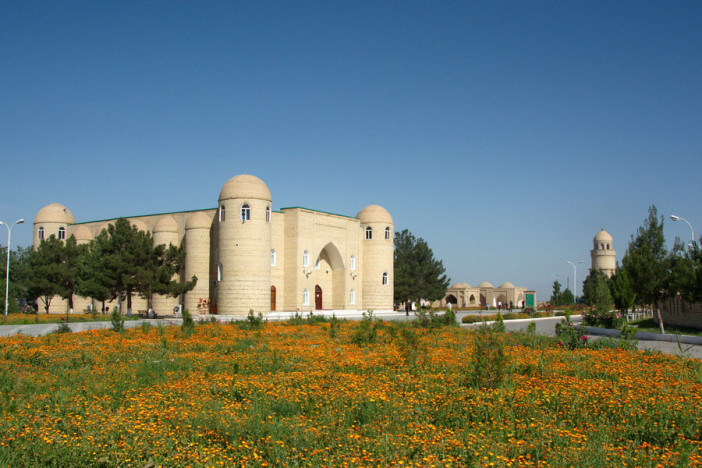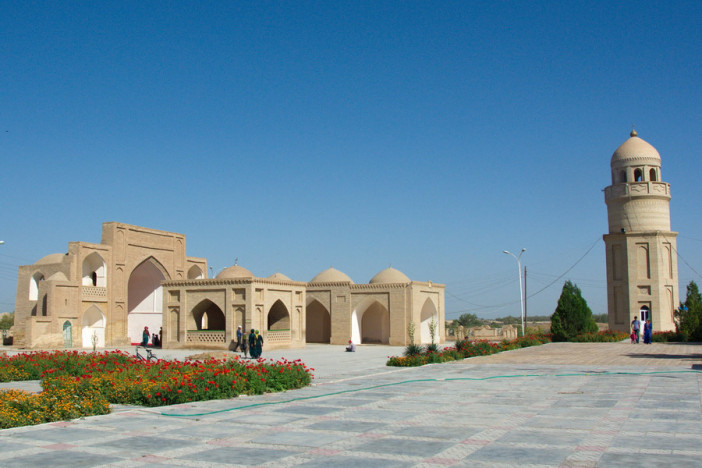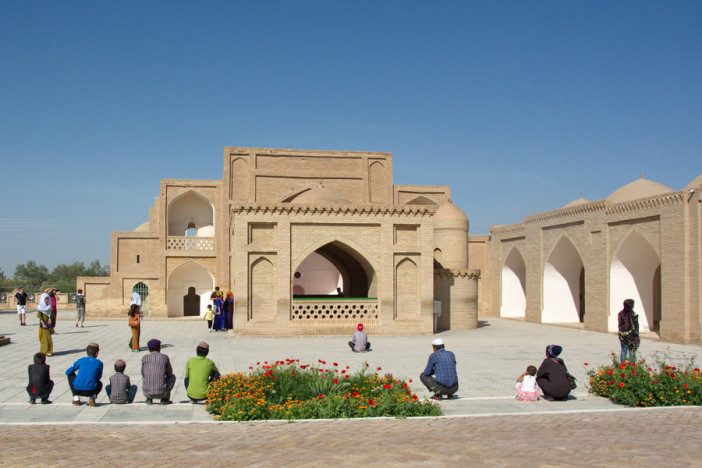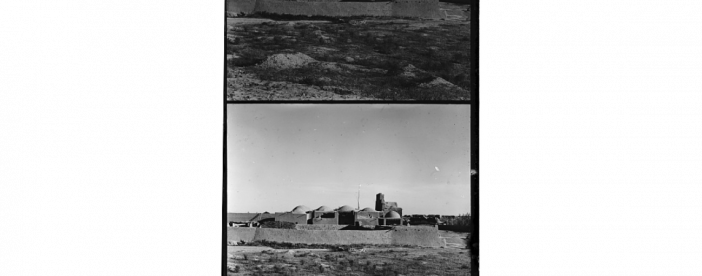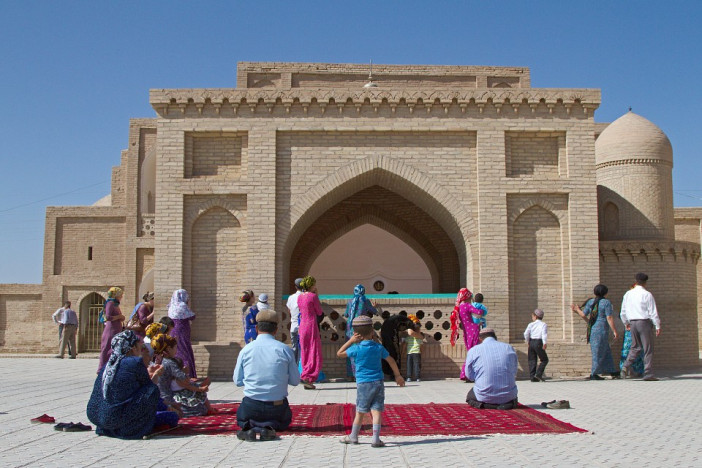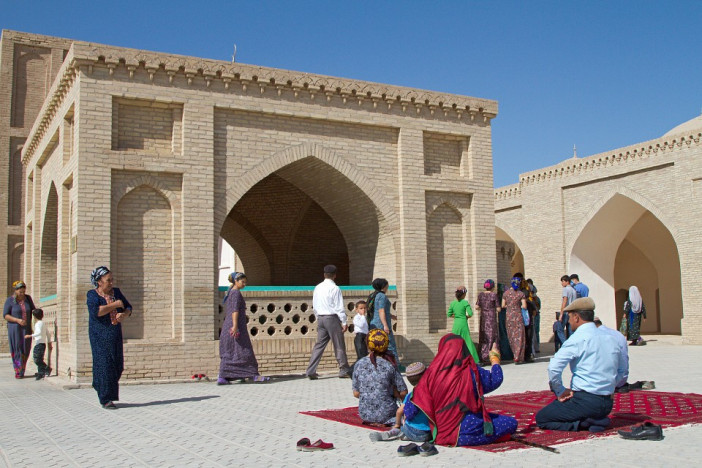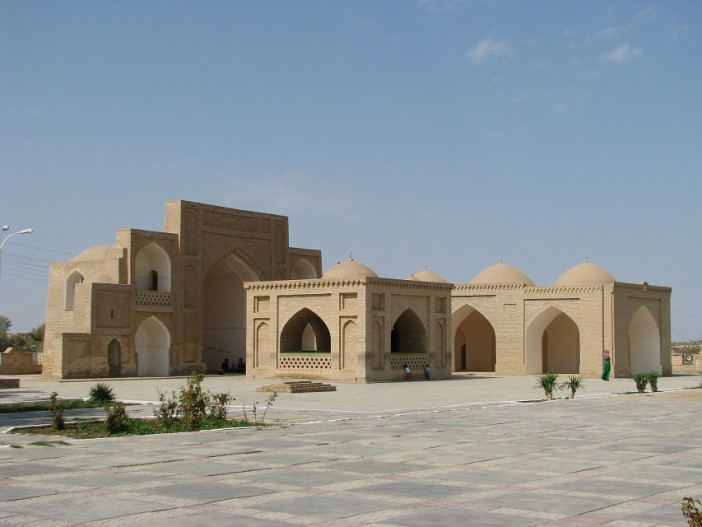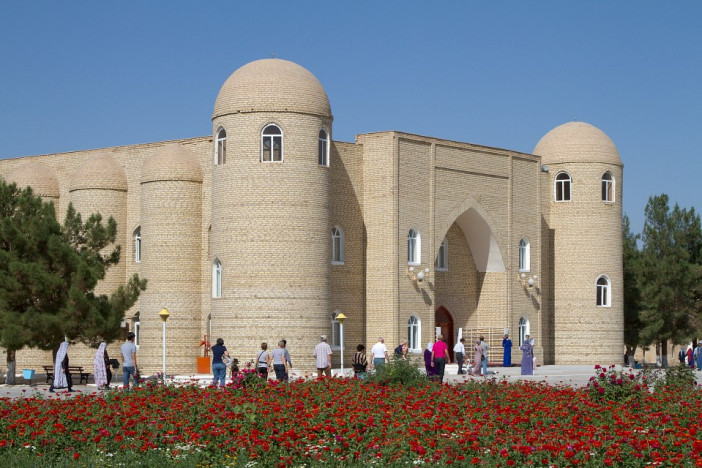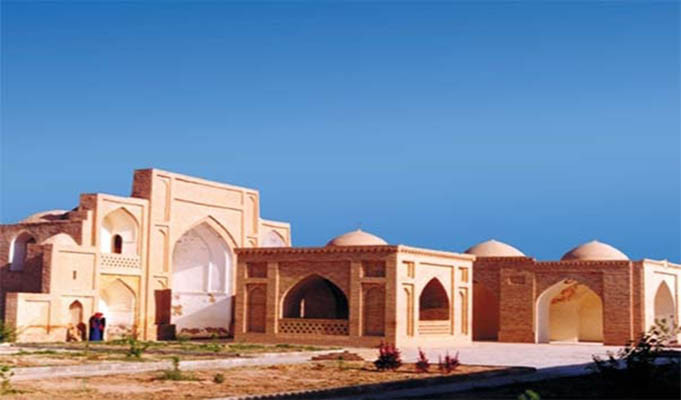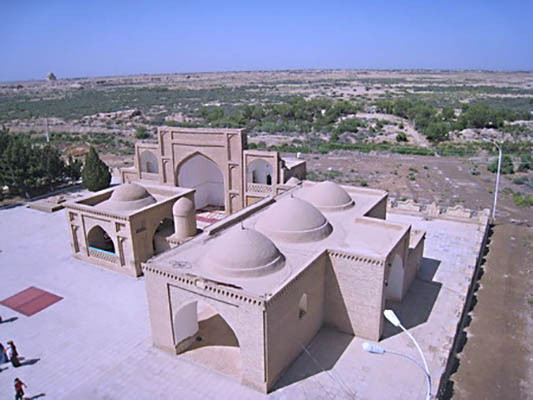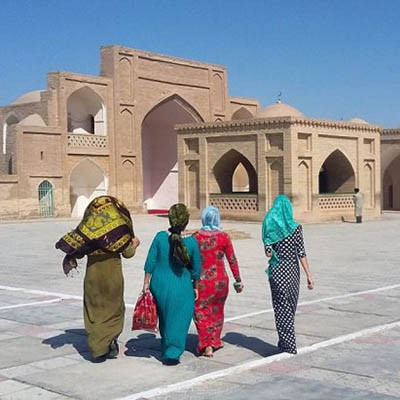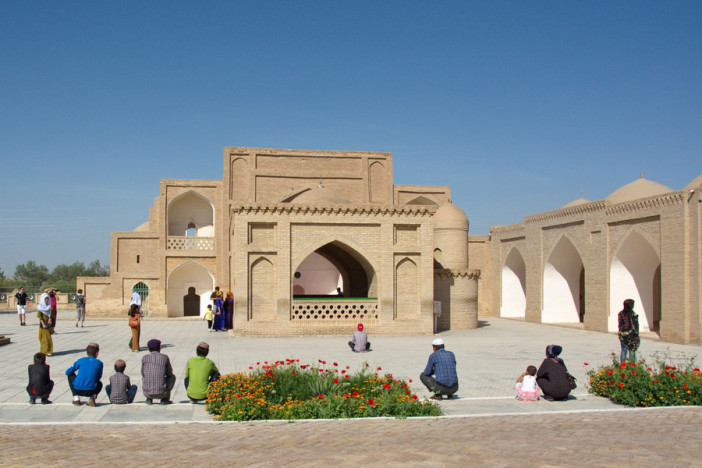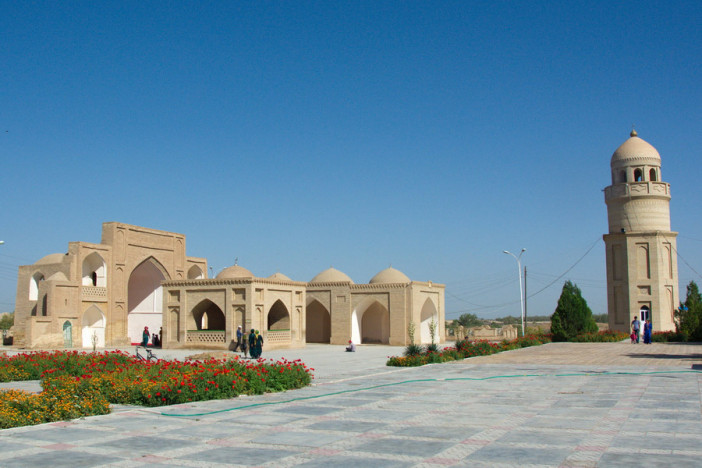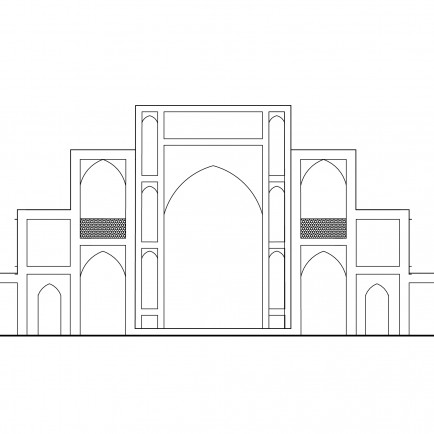Mosque Of Yusuf Hamadani
History
Abū Yaʿqūb Yūsuf al-Hamadānī, best simply known as Yusuf Hamadani (born 1048 or 1049 / 440 AH - died 1140 / 535 AH), was a Persian[1] figure of the Middle Ages. He was the first of the group of Central Asian Sufi teachers known simply as Khwajagan (the Masters) of the Naqshbandi order. His shrine is at Merv, Turkmenistan. This complex was built on the burial site of Abu-Yakub Yusuf ibn Ayub born in the city of Hamadan (western Iran ). Above his tomb the mausoleum, which has not survived, was erected.
The destroyed structure was partially restored and reconstructed in the 19th century. The tomb of the dervish symbolizes a crypt from black marble decorated with a floral ornament and inscriptions.
Today Yusuf Khamadani mosque is an important Muslim temple, the place of worshipping.
Urban and Architectural
the mausoleum of mosque completely reconstructed. In the area increased several buildings. One of them represents the vault over the tomb of the famous Sufi, there can be seen a black marble slab, decorated with inscriptions and ornaments with floral motifs. In the western sector of the ensemble rises khanaka – room for prayers. It is bordered by high central quince. In the western corner of the mausoleum is a chapel with a central iwan. It is the main part of the complex. Today, Yusuf Hamadani mosque - an important Muslim shrine - a place of worship of believers.
Description
This complex arose on the place of burial of a dervish Abu Yaqub Yusuf ibn Ayyub, born in the city of Hamadan (western Iran). Above his grave was erected a mausoleum, from which to this day almost nothing left.
Partially destroyed the structure was rebuilt and reconstructed in the XIX century. Dervish grave symbolizes the vault of black marble, decorated with floral patterns and inscriptions.
Details
Location
in Ancient Merv. Situated in modern-day Eastern Turkmenistan.
Year of Build
the XIII century
Drawings
Map
History
Abū Yaʿqūb Yūsuf al-Hamadānī, best simply known as Yusuf Hamadani (born 1048 or 1049 / 440 AH - died 1140 / 535 AH), was a Persian[1] figure of the Middle Ages. He was the first of the group of Central Asian Sufi teachers known simply as Khwajagan (the Masters) of the Naqshbandi order. His shrine is at Merv, Turkmenistan. This complex was built on the burial site of Abu-Yakub Yusuf ibn Ayub born in the city of Hamadan (western Iran ). Above his tomb the mausoleum, which has not survived, was erected.
The destroyed structure was partially restored and reconstructed in the 19th century. The tomb of the dervish symbolizes a crypt from black marble decorated with a floral ornament and inscriptions.
Today Yusuf Khamadani mosque is an important Muslim temple, the place of worshipping.
Urban and Architectural
the mausoleum of mosque completely reconstructed. In the area increased several buildings. One of them represents the vault over the tomb of the famous Sufi, there can be seen a black marble slab, decorated with inscriptions and ornaments with floral motifs. In the western sector of the ensemble rises khanaka – room for prayers. It is bordered by high central quince. In the western corner of the mausoleum is a chapel with a central iwan. It is the main part of the complex. Today, Yusuf Hamadani mosque - an important Muslim shrine - a place of worship of believers.
Description
This complex arose on the place of burial of a dervish Abu Yaqub Yusuf ibn Ayyub, born in the city of Hamadan (western Iran). Above his grave was erected a mausoleum, from which to this day almost nothing left.
Partially destroyed the structure was rebuilt and reconstructed in the XIX century. Dervish grave symbolizes the vault of black marble, decorated with floral patterns and inscriptions.


